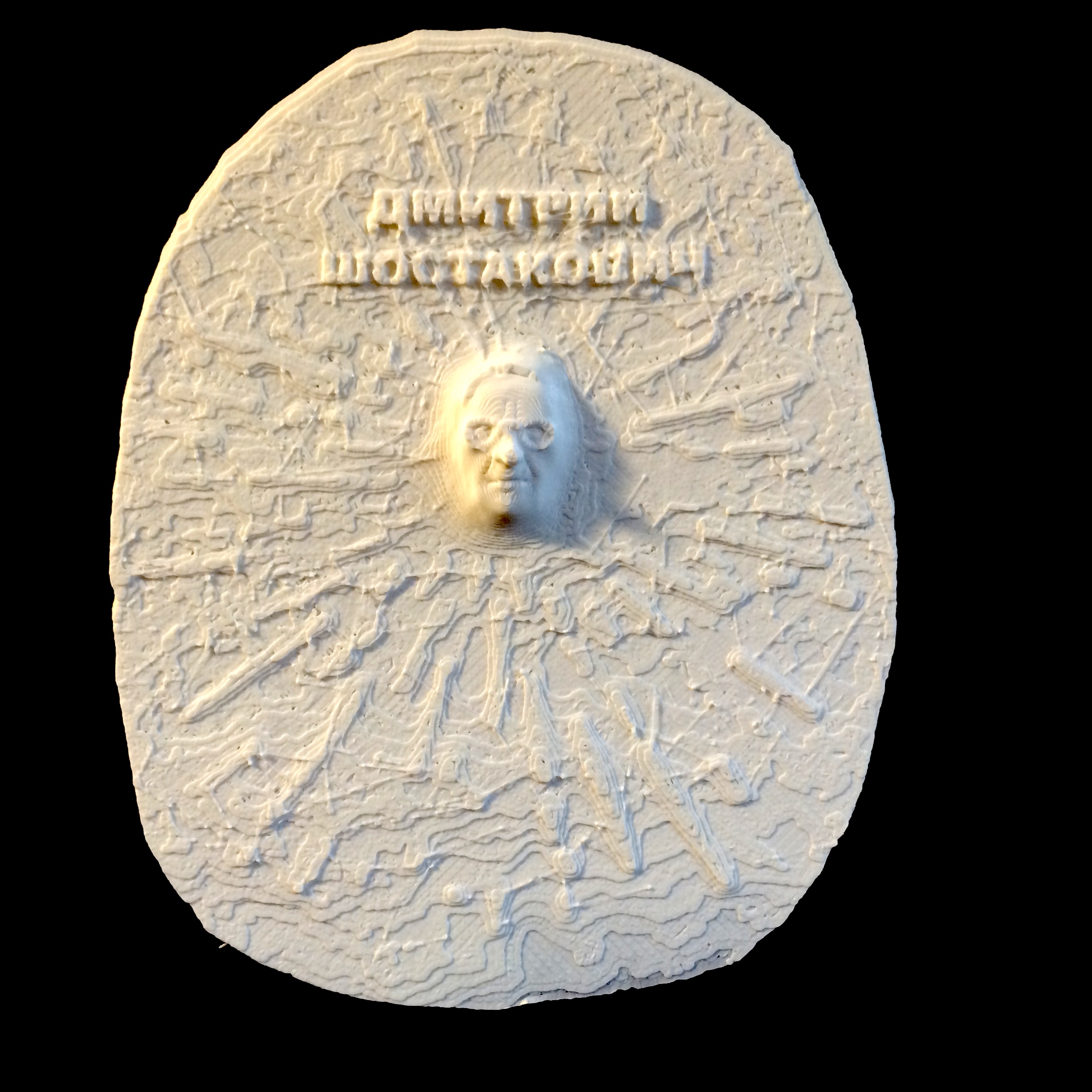
Relief
myminifactory
Who is depicted? Dmitri Dmitrievich Shostakovich was born on September 25, 1906, in St. Petersburg, Russia. He is the second of three children of Dmitri Boleslavovich Shostakovich, a chemical engineer, and Sofia Kokaoulina, a pianist. Young Shostakovich studied piano under his mother's guidance and at a private school in St. Petersburg. His biggest influences were Johann Sebastian Bach, Ludwig van Beethoven, and Modest Mussorgsky. From 1919 to 1925 he studied piano and composition at the St. Petersburg (Leningrad) Conservatory. He wrote his first "Classical" symphony as his graduation piece. In 1927 he won an honorable mention diploma at the 1st International Piano Competition in Warsaw. In 1929, Shostakovich collaborated with writer Vladimir Mayakovsky, artist Alexander Rodchenko, and director Vsevolod Meyerhold. Technical specifications about the statue: Relief is a sculptural technique where the sculpted elements remain attached to a solid background of the same material. The term "relief" comes from the Latin verb "relevo," which means to raise. To create a sculpture in relief is to give the impression that the sculpted material has been raised above the background plane. What actually happens when a relief is cut into a flat surface of stone (relief sculpture) or wood (relief carving) is a lowering of the field, leaving the unsculpted parts seemingly raised. The technique involves a lot of chiseling away of the background, which is a time-consuming process. On the other hand, a relief saves forming the rear of a subject, and it's less fragile and more securely fixed than a sculpture in the round, especially one of a standing figure where the ankles are a potential weak point, especially in stone. In other materials such as metal, clay, plaster stucco, ceramics, or papier-mâché, the form can be just added to or raised up from the background, and monumental bronze reliefs are made by casting. There are different degrees of relief depending on the degree of projection of the sculpted form from the field, for which the Italian terms are still sometimes used. The full range includes high relief (alto-rilievo, haut-relief), where more than 50% of the depth is shown and there may be undercut areas, mid-relief (mezzo-rilievo), low-relief (basso-rilievo, or French: bas-relief /ˌbɑːrɪˈliːf/), and shallow relief or rilievo schiacciato, where the plane is only very slightly lower than the sculpted elements. There is also sunk relief, which was mainly restricted to Ancient Egypt (see below). However, the distinction between high relief and low relief is the clearest and most important, and these two are generally the only terms used to discuss most work. The definition of these terms is somewhat variable, and many works combine areas in more than one of them, sometimes sliding between them in a single figure; accordingly some writers prefer to avoid all distinctions. The opposite of relief sculpture is counter-relief, intaglio, or cavo-rilievo, where the form is cut into the field or background rather than rising from it; this is very rare in monumental sculpture.
With this file you will be able to print Relief with your 3D printer. Click on the button and save the file on your computer to work, edit or customize your design. You can also find more 3D designs for printers on Relief.
